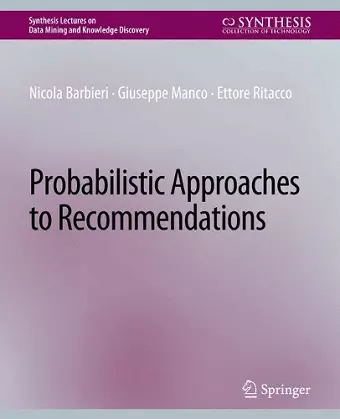Probabilistic Approaches to Recommendations
Giuseppe Manco author Nicola Barbieri author Ettore Ritacco author
Format:Paperback
Publisher:Springer International Publishing AG
Published:23rd May '14
Currently unavailable, and unfortunately no date known when it will be back

The importance of accurate recommender systems has been widely recognized by academia and industry, and recommendation is rapidly becoming one of the most successful applications of data mining and machine learning. Understanding and predicting the choices and preferences of users is a challenging task: real-world scenarios involve users behaving in complex situations, where prior beliefs, specific tendencies, and reciprocal influences jointly contribute to determining the preferences of users toward huge amounts of information, services, and products. Probabilistic modeling represents a robust formal mathematical framework to model these assumptions and study their effects in the recommendation process. This book starts with a brief summary of the recommendation problem and its challenges and a review of some widely used techniques Next, we introduce and discuss probabilistic approaches for modeling preference data. We focus our attention on methods based on latent factors, such as mixture models, probabilistic matrix factorization, and topic models, for explicit and implicit preference data. These methods represent a significant advance in the research and technology of recommendation. The resulting models allow us to identify complex patterns in preference data, which can be exploited to predict future purchases effectively. The extreme sparsity of preference data poses serious challenges to the modeling of user preferences, especially in the cases where few observations are available. Bayesian inference techniques elegantly address the need for regularization, and their integration with latent factor modeling helps to boost the performances of the basic techniques. We summarize the strengths and weakness of several approaches by considering two different but related evaluation perspectives, namely, rating prediction and recommendation accuracy. Furthermore, we describe how probabilistic methods based on latent factors enable the exploitation of preference patterns in novel applications beyond rating prediction or recommendation accuracy. We finally discuss the application of probabilistic techniques in two additional scenarios, characterized by the availability of side information besides preference data. In summary, the book categorizes the myriad probabilistic approaches to recommendations and provides guidelines for their adoption in real-world situations.
ISBN: 9783031007781
Dimensions: unknown
Weight: 387g
181 pages